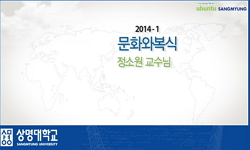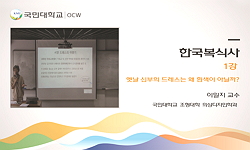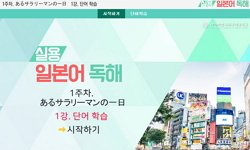This study explored public awareness and donning practices of traditional and religious dresses among Indonesian Muslim. The relevant literature was reviewed first, and in-depth interviews and survey were followed to achieve the purpose of the study. ...
http://chineseinput.net/에서 pinyin(병음)방식으로 중국어를 변환할 수 있습니다.
변환된 중국어를 복사하여 사용하시면 됩니다.
- 中文 을 입력하시려면 zhongwen을 입력하시고 space를누르시면됩니다.
- 北京 을 입력하시려면 beijing을 입력하시고 space를 누르시면 됩니다.
https://www.riss.kr/link?id=A102255077
- 저자
- 발행기관
- 학술지명
- 권호사항
-
발행연도
2012
-
작성언어
Korean
- 주제어
-
KDC
381
-
등재정보
KCI등재
-
자료형태
학술저널
- 발행기관 URL
-
수록면
117-132(16쪽)
-
KCI 피인용횟수
3
- DOI식별코드
- 제공처
- 소장기관
-
0
상세조회 -
0
다운로드
부가정보
다국어 초록 (Multilingual Abstract)
This study explored public awareness and donning practices of traditional and religious dresses among Indonesian Muslim. The relevant literature was reviewed first, and in-depth interviews and survey were followed to achieve the purpose of the study. Sarung and Kain Panjang are the most representative unisex traditional clothing of Indonesia. Traditional male dresses include Kemeja Batik, Beskap, Peci(Kopiah) and Blangkon. Traditional female dresses include Kebaya, Baju Kurung, Baju Bodo, Kemben, Rok Batik and Slendang. Baju Koko, Sarung and Peci(Kopiah) are the most well-known Muslim male dress items. Muslim female dresses are more diverse than men`s. For traditional and religious dresses, which were identified from literature study, public awareness and donning practices were examined with survey data. Indonesian people consider Kebaya, Sarung, and Batik as the most important traditional dresses which convey national identity. Peci(Kopiah), Baju koko, and Jilbab(Kerudung) are highly mentioned as the representatives of Muslim dresses. Indonesian Muslims report that they own these representative dresses commonly. Peci and Sarung are included both in religious and traditional dresses, demonstrating that the two items are the representative crossovers of their religion and the tradition of the country. For both traditional and Muslim dresses, Indonesian people think that aesthetics and traditional values are more relevant than practical value. Lastly, it is found that traditional dresses are parts of the daily wear of Indonesian people from the fact that they wear traditional dresses more than once a week.
참고문헌 (Reference)
1 권수애, "한복의 착용실태와 구매요인에 관한 연구" 7 (7): 129-138, 1998
2 조우현, "한복의 소비자 인식에 관한 연구" 한국복식학회 60 (60): 130-143, 2010
3 정인희, "한국 도시 여성의 한복착용에 대한 의식-서울, 대전, 부산을 중심으로" 35 : 253-264, 2007
4 박진경, "한국 다문화정책의 특성과 발전방향 -다문화 정책 모형이론을 중심으로" 178-, 2010
5 이순원, "피복환경학" 한국방송통신대학출판부 19-, 1991
6 임진숙, "천 가지 이야기가 있는 나라 인도네시아" 즐거운 상상 19-, 2007
7 남지화, "질밥(jilbab)은 인도네시아 무슬림 여성들의 정체성인가" 136 : 24-25, 2004
8 양승윤, "인도네시아 사회와 문화" 한국외국어대학교 출판부 340-, 1997
9 石山彰, "인도네시아 사라사(更紗)와 衣裝, 동남아시아의 직물과 복식문화" 온양민속박물관 134-, 1996
10 양승윤, "인도네시아 무슬림의 통과의례의 대한고찰" 5 : 200-, 1996
1 권수애, "한복의 착용실태와 구매요인에 관한 연구" 7 (7): 129-138, 1998
2 조우현, "한복의 소비자 인식에 관한 연구" 한국복식학회 60 (60): 130-143, 2010
3 정인희, "한국 도시 여성의 한복착용에 대한 의식-서울, 대전, 부산을 중심으로" 35 : 253-264, 2007
4 박진경, "한국 다문화정책의 특성과 발전방향 -다문화 정책 모형이론을 중심으로" 178-, 2010
5 이순원, "피복환경학" 한국방송통신대학출판부 19-, 1991
6 임진숙, "천 가지 이야기가 있는 나라 인도네시아" 즐거운 상상 19-, 2007
7 남지화, "질밥(jilbab)은 인도네시아 무슬림 여성들의 정체성인가" 136 : 24-25, 2004
8 양승윤, "인도네시아 사회와 문화" 한국외국어대학교 출판부 340-, 1997
9 石山彰, "인도네시아 사라사(更紗)와 衣裝, 동남아시아의 직물과 복식문화" 온양민속박물관 134-, 1996
10 양승윤, "인도네시아 무슬림의 통과의례의 대한고찰" 5 : 200-, 1996
11 이정순, "이슬람 문화와 여성" 기독교문서선교회 162-, 2007
12 홍나영, "아시아 전통복식" 敎文社 96-, 2004
13 오가와 야수로, "세계민족복식" 민속원 66-, 2010
14 배영동, "물질문화의 개념 수정과 연구 전망-민속학의 영역과 방법 확장을 생각하며-" 한국민속학회 46 : 240-, 2007
15 김영수, "무슬림의 나라 인도네시아 이해하기" 54 : 69-71, 2011
16 이정순, "무슬림 여성과 베일" 기독교문서선교회 70-, 2002
17 Anawalt, P. R., "The worldwide history ofdress" Thames & Hudson 293-, 2007
18 Hansen, K. T., "The world in dress: Anthropologicalperspectives on clothing, fashion andculture" 33 : 379-, 2004
19 Rozan Yunos, "The origin ofthe songkok or kopiah"
20 Cattoni, V., "Reading the Kebaya, A paperpresented at the 15th Biennial Conference of theAsian Studies Association of Australia" Canberra,Australia 3-4, 2004
21 "2010 출입국외국인정책 통계연보"
동일학술지(권/호) 다른 논문
-
여성의 생활만족도와 헤어스타일행동 및 헤어스타일 이미지 선호의 관계 연구
- 한국복식학회
- 노선옥(Sun Ok Noh)
- 2012
- KCI등재
-
- 한국복식학회
- 교단(Dan Qiao)
- 2012
- KCI등재
-
국가 상징 이미지로 무궁화를 모티브로 활용한 패션문화상품 개발에 관한 연구
- 한국복식학회
- 김미현(Mi Hyun Kim)
- 2012
- KCI등재
-
- 한국복식학회
- 장현주(Hyun Joo Jang)
- 2012
- KCI등재
분석정보
인용정보 인용지수 설명보기
학술지 이력
| 연월일 | 이력구분 | 이력상세 | 등재구분 |
|---|---|---|---|
| 2026 | 평가예정 | 재인증평가 신청대상 (재인증) | |
| 2020-01-01 | 평가 | 등재학술지 유지 (재인증) |  |
| 2017-01-01 | 평가 | 등재학술지 유지 (계속평가) |  |
| 2013-01-01 | 평가 | 등재학술지 유지 (등재유지) |  |
| 2010-01-22 | 학술지명변경 | 외국어명 : 미등록 -> Journal of the Korean Society of Costume |  |
| 2010-01-01 | 평가 | 등재학술지 유지 (등재유지) |  |
| 2008-01-01 | 평가 | 등재학술지 유지 (등재유지) |  |
| 2006-01-01 | 평가 | 등재학술지 유지 (등재유지) |  |
| 2003-01-01 | 평가 | 등재학술지 선정 (등재후보2차) |  |
| 2002-01-01 | 평가 | 등재후보 1차 PASS (등재후보1차) |  |
| 1999-07-01 | 평가 | 등재후보학술지 선정 (신규평가) |  |
학술지 인용정보
| 기준연도 | WOS-KCI 통합IF(2년) | KCIF(2년) | KCIF(3년) |
|---|---|---|---|
| 2016 | 0.63 | 0.63 | 0.65 |
| KCIF(4년) | KCIF(5년) | 중심성지수(3년) | 즉시성지수 |
| 0.6 | 0.55 | 0.798 | 0.17 |




 ScienceON
ScienceON DBpia
DBpia







